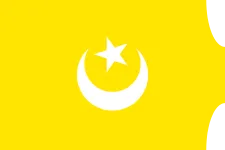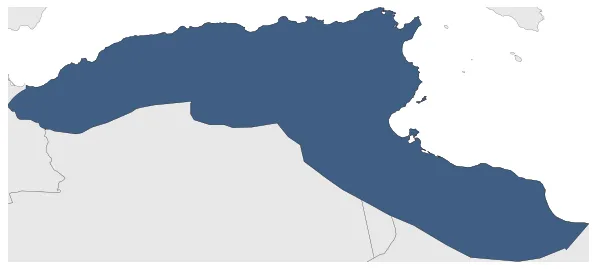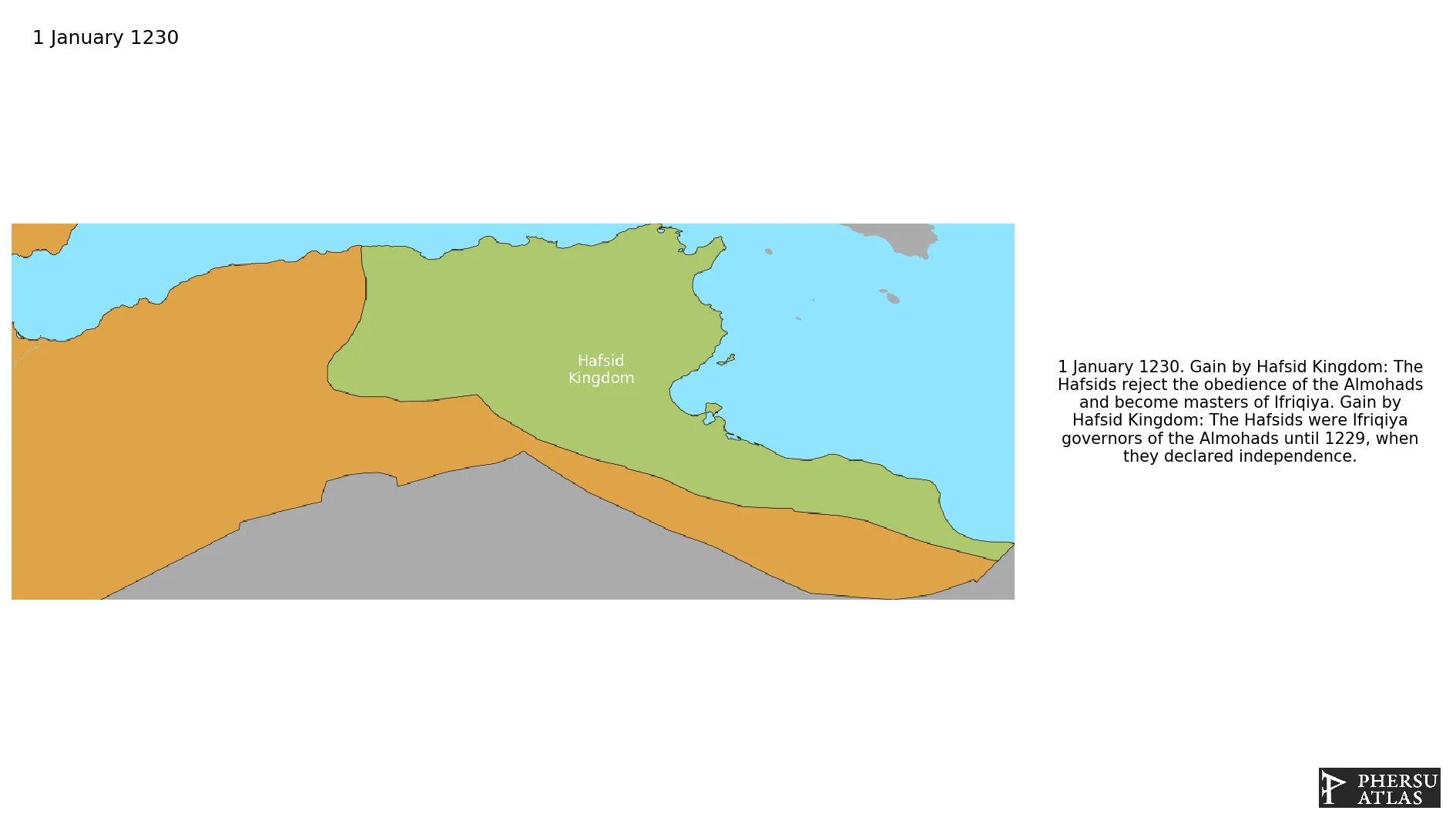 Hafsid Kingdom
Hafsid Kingdom
This article is about the specific polity Hafsid Kingdom and therefore only includes events related to its territory and not to its possessions or colonies. If you are interested in the possession, this is the link to the article about the nation which includes all possessions as well as all the different incarnations of the nation.
If you are looking for the page with the statistics about this polity you can find it here:All Statistics
Was a Sunni Muslim dynasty of Berber descent who ruled Ifriqiya (western Libya, Tunisia, and eastern Algeria) from 1229 to 1574.
Establishment
January 1230: The Hafsids were Ifriqiya governors of the Almohads until 1229, when they declared independence.
January 1230: The Hafsids reject the obedience of the Almohads and become masters of Ifriqiya.
Chronology
Interactive Chronologies with maps are available in the section Changes Navigation
The Crusades were a series of religious wars initiated, supported, and sometimes directed by the Latin Church in the Medieval period. The best known of these military expeditions are those to the Holy Land in the period between 1095 and 1291.
1.1.Eighth Crusade
Was a Crusade led by Louis IX of France against the Hafsids of Tunisia.
July 1270: The Crusaders landed on the Tunisian coast on 18 July without facing much resistance. The crusaders built a camp near a fort built over Carthage and awaited the arrival of the Sicilian contingent under Charles of Anjou.
October 1270: Because of diseases the siege of Tunis was abandoned on 30 October with the Treaty of Tunis.
Conquests and wars with Ottoman involvement during the rule of Suleiman I.
January 1521: Kheireddine Barbarossa seizes the city of Collo with the help of the locals.
January 1522: Constantine conquered by Ottoman Empire.
January 1523: Annaba conquered by Ottoman Empire.
August 1534: The Ottomans conquered Tunis in 1534.
January 1243: The Hafsids conquered the Kingdom of Tlemcen in 1242.
January 1243: The region of Silves passed to the Hafsid Kingdom.
January 1273: Oujda and Sijilmasa lost to Marinids.
January 1285: In 1284, the Aragonese ruler Frederick III, who had recently taken control of Sicily, invaded Djerba and maintained control of the territory until 1333. This marked a period of Aragonese dominance in the region.
January 1300: The Marinid Abu Yaqub Yusuf an-Nasr was the sultan of the Marinid Dynasty, a Berber Muslim dynasty. Tlemcen was a city in North Africa, known for its strategic importance and wealth. The siege lasted for 8 years, from 1299 to 1307, as the Marinids sought to expand their territory.
January 1308: End of the Marinid siege of Tlemcen.
January 1321: Most of the intenal area of the Hafsid Kingdom is conquered by the Kingdom of Tlemcen.
January 1334: In 1284, Frederick III of Aragon, who was the ruler of Sicily, invaded Djerba and held control of the territory until 1333. This marked a period of Aragonese dominance in the region before the territory was eventually taken over by the Hafsid Kingdom.
January 1354: Bejaia conquered by Marinid Dynasty.
January 1358: Kingdom of Tlemcen conquered by Marinid Dynasty.
January 1360: The Zayyanid king Abu Hammu Musa II (r. 1359-1389) took the throne of Tlemcen.
January 1390: Djerba was retaken for Sicily by Manfredi Chiaramonte, who became lord of the island, and also seized the Kerkennah Islands.
January 1393: The Sicilian garrison abandoned Kerkennah Islands and Djerba in 1392.
January 1466: In 1465, the city of Tuggurt came under the rule of the Sultanate of Tuggurt, which was established in the 15th century. The territory was previously under the authority of the Hafsid dynasty, like other cities in eastern Algeria.
January 1511: Tripoli (1510-1530), then ceded to the Knights Hospitaller, was lost in 1551.
January 1511: Spanish Béjaïa (Bugia) (1510-1555).
January 1515: Called by the inhabitants of Algiers, the brothers Arudj and Khayr ad-Din landed in Jijel in 1514 and made the city their rear base.
January 1519: The French bought right of possession over El Kala, in North Africa, from the Arabas.
January 1522: The Tunisian Island of Djerba was controlled by Spanish forces from 1521 to 1524 and from 1559 to 1560. The Spanish called the Island Yerba.
January 1525: The Tunisian Island of Djerba was controlled by Spanish forces from 1521 to 1524 and from 1559 to 1560. The Spanish called the Island Yerba.
Disestablishment
August 1534: The Ottomans conquered Tunis in 1534.


 Hafsid Kingdom
Hafsid Kingdom




























